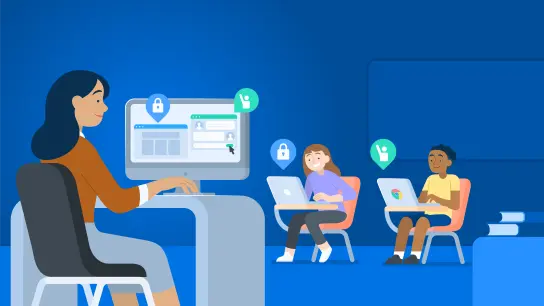Responsible AI Use Resources for Teachers, Students & Parents 2025
- Abhinand PS
.jpg/v1/fill/w_320,h_320/file.jpg)
- 5 days ago
- 3 min read
Introduction
Artificial Intelligence (AI) is reshaping education in incredible ways—from personalized learning to grading assistance. But with these advances comes the vital responsibility to use AI tools wisely and ethically. In 2025, as AI becomes even more integrated into classrooms and homes, understanding how to use AI responsibly is essential for teachers, students, and parents alike.
This comprehensive guide shares trusted resources and proven strategies to empower educators, learners, and families to adopt AI tools safely, effectively, and ethically—boosting learning without compromising integrity or privacy.

Why Responsible AI Use in Education Matters
AI’s potential to transform education is immense, yet its misuse can lead to academic dishonesty, privacy concerns, and digital divides. Responsible AI use ensures:
Fair and ethical integration of AI in learning
Protection of student data and privacy
Encouragement of critical thinking and creativity
Support for educators rather than replacement
Teachers, students, and parents must collaborate and understand AI’s capabilities and limitations to promote a balanced, future-ready education environment.
Top Resources for Responsible AI Use in Education
For Teachers: Tools and Training
International Society for Technology in Education (ISTE) provides standards and professional development focused on ethical AI use in classrooms.
Google for Education AI Resources offers lesson plans and guides for AI literacy focused on responsible use.
AI4ALL Educators Guide equips teachers with curriculum and best practices to teach AI ethics and digital citizenship.
For Students: Learning and Awareness
Common Sense Education’s Digital Citizenship Curriculum helps students learn about AI’s impact while fostering responsible behaviors online.
MIT Media Lab’s AI + Ethics Youth Program introduces younger learners to AI concepts with focus on fairness and societal impact.
Khan Academy’s Introduction to AI includes modules teaching AI fundamentals alongside ethical considerations.
For Parents: Guidance and Support
U.S. Department of Education’s AI in Schools Resource Hub offers FAQs and advice for parents to understand AI’s role in education safely.
Parent Toolkit provides insights on supervising AI usage and encouraging balanced tech habits at home.
Family Online Safety Institute (FOSI) shares best practices for privacy and ethical AI discussions with children.
Practical Tips for Responsible AI Use
Maintain Transparency with AI ToolsTeachers should clearly explain when and how AI tools are used to boost transparency and trust in educational settings.
Encourage Critical ThinkingUse AI as a supplement rather than a shortcut. Encourage students to question AI outputs and verify information independently.
Protect PrivacyUse AI platforms compliant with privacy laws like FERPA or GDPR. Train students and parents on data security and safe online behavior.
Set Boundaries for UseParents and educators should establish clear rules for AI usage, balancing screen time while fostering curiosity responsibly.
Promote Ethical AI DiscussionsIncorporate AI ethics conversations in curricula to develop awareness about bias, fairness, and the societal impact of AI.
Quick Comparison Table: AI Resources by Group
User Group | Key Resources | Focus Areas |
Teachers | ISTE, Google for Education, AI4ALL | Ethical AI integration, training |
Students | Common Sense Education, MIT Media Lab, Khan Academy | AI fundamentals, digital citizenship |
Parents | U.S. Dept. Ed, Parent Toolkit, FOSI | Supervision, privacy, safety |
FAQs on Responsible AI Use in Education
Q1. What does responsible AI use in education mean?It means using AI tools to enhance learning while prioritizing ethics, transparency, privacy, and fairness.
Q2. How can teachers ensure ethical AI use in classrooms?By educating students on AI’s limitations, maintaining transparency, and using vetted educational AI tools with privacy compliance.
Q3. Are there any risks if AI is used irresponsibly in education?Yes, risks include academic dishonesty, data breaches, bias in AI algorithms, and reduced critical thinking skills.
Q4. How can parents monitor their child’s AI tool usage?Parents should stay informed about AI applications, set clear usage boundaries, and foster open conversations about AI’s impact.
Q5. Can AI replace teachers or parents in education?No, AI is a supplementary tool designed to assist—not replace—the essential human roles of teachers and parents.
Conclusion
In 2025, AI’s role in education will keep expanding, making it crucial for teachers, students, and parents to use AI tools responsibly. By leveraging trusted resources, encouraging ethical behaviors, and fostering open dialogue, the educational community can harness AI’s power safely and effectively.
For more guidance on responsible AI adoption in education, explore resources from ISTE, Common Sense Education, and the U.S. Department of Education to ensure a smart and ethical learning journey ahead.



Comments